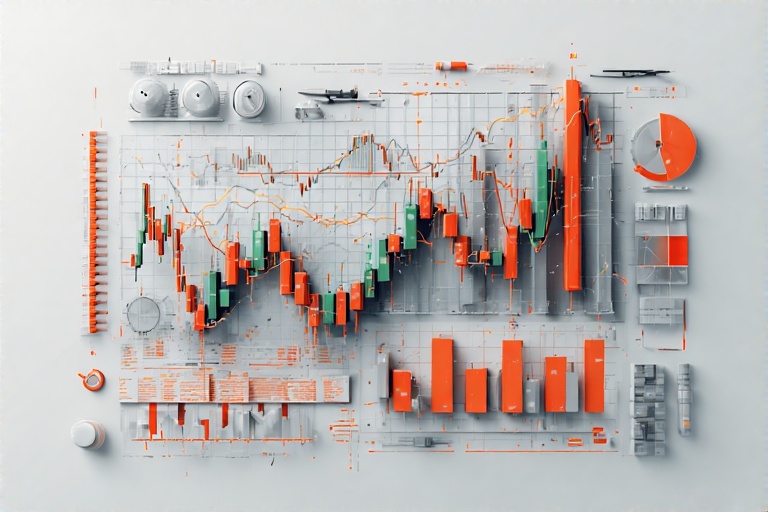Stock markets rarely move in straight lines. A company can post record profits and see its shares slide, or deliver disappointing results and watch them rally. Behind every blip on a price chart lie multiple forces—from raw financial figures to collective psychology and automated trading algorithms. Understanding these drivers can help you interpret sudden swings, avoid emotional pitfalls, and make more informed decisions.
1. The Foundation: Company Fundamentals
At the core of any share’s long-term value are its underlying financials. Key metrics include:
- Earnings per Share (EPS): How much profit the company earns for each outstanding share.
- Revenue Trends: The pace at which sales grow (or shrink) quarter after quarter.
- Cash Flow: The real cash generated by operations, which funds dividends, buybacks, and expansion.
- Balance Sheet Strength: The ratio of debt to equity, liquidity reserves, and asset quality.
These indicators form the “weighing machine” that investors rely on over years and decades. Strong, predictable cash flows and manageable debt usually support rising valuations over time, even when sentiment falters.
2. Beyond the Numbers: The Power of Expectations
Markets are forward-looking. Investors build estimates of profits, margins, and growth before results arrive. If a company reports profits higher than analysts forecast, the stock often climbs. If results disappoint—even if they’re better than a year ago—the price can tumble.
That gap between forecast and outcome is the “surprise factor.” A tiny miss in EPS guidance can trigger a 5–10% drop in trading, while an unexpected beat may spark an equally large rally. This dynamic shows that perception of progress matters as much as progress itself.
3. The Emotional Tide: How Market Mood Shapes Pricing
Human psychology is woven into every trade. Emotions like fear and greed can overwhelm logic, driving prices well above or below intrinsic value. Prominent emotional drivers include:
- Fear: Negative headlines or geopolitical unrest can spark rapid selling, even in fundamentally sound companies.
- Greed: Bull runs often fuel irrational exuberance, pushing valuations to unsustainable peaks.
- Herding: When a trend forms, many investors pile in simply because others are doing so—amplifying price moves.
- FOMO (Fear of Missing Out): Late-arriving participants rush to buy into rallies, sometimes at the very top.
These collective moods ebb and flow. Recognizing extreme sentiment—using indicators such as the VIX or put/call ratios—can reveal turning points before they appear in earnings or economic data.
4. External Winds: Economic and Geopolitical Influences
Broader forces beyond company walls also drive share prices:
- Interest Rates: Rate hikes raise borrowing costs and can depress valuations, while cuts often ignite rallies.
- Inflation: High inflation erodes profit margins and purchasing power, prompting risk-off behavior.
- Currency Shifts: A stronger domestic currency can reduce overseas revenues for multinationals.
- Geopolitical Events: Elections, trade disputes, or conflicts introduce uncertainty, triggering volatility.
These broad trends often affect entire sectors—bank shares may lag when rates fall, energy stocks can rise on supply-risk fears, and exporters suffer when their home currency strengthens.
5. Algorithms and Charts: Technical Forces at Play
Not all price moves stem from human decisions. Quantitative funds and automated systems now account for a large share of daily volume. They chase patterns in price charts, volume spikes, and even social-media sentiment scores.
Popular technical signals include moving-average crossovers, breakouts from trading ranges, and momentum thresholds. When these are triggered, algorithms execute large blocks of buy or sell orders in milliseconds—sometimes causing “flash crashes” or sudden rallies that have little to do with fundamentals or news.
6. Illustrations in Action
Let me show you some examples that highlight this interplay:
- Company A: Announced a 15% jump in quarterly profits but issued cautious guidance. Shares fell 8% as analysts fretted about future growth.
- Company B: Missed its sales target by 3%, yet the stock gained 12% because management unveiled an ambitious cost-cutting plan.
- Sector X: Suffered a sudden 20% drop across multiple names after an unexpected central-bank rate decision, even though none face direct rate-sensitive debt.
In each case, the headline number told only part of the story—expectations, tone of commentary, and broad market context determined the real reaction.
7. Strategies for Clear Thinking
How can you navigate this complex landscape without getting swept away by emotion or noise?
- Define Your Time Horizon: Short-term traders may embrace volatility, while long-term investors focus on cash flows and growth trends.
- Monitor Sentiment Gauges: Tools like the VIX, AAII Bull–Bear survey, or simple put/call ratios can warn of extreme optimism or pessimism.
- Set Clear Triggers: Use stop-loss orders, profit targets, and risk budgets to automate discipline and prevent knee-jerk reactions.
- Diversify Thoughtfully: Blend exposure to different sectors, asset classes, and geographies to reduce the impact of any single shock.
- Keep a Market Journal: Record the reasons for each trade or investment. Reflect later on what you got right and where emotion crept in.
Final Thoughts
Share-price movements emerge from a tangled web of data, expectations, sentiment, external shocks, and automated trades. While fundamentals anchor long-term value, emotional and technical forces often dominate in the short term. By learning to read both sides of the equation, you’ll be better equipped to seize opportunities, manage risk, and remain grounded when markets turn turbulent.







Add a Comment